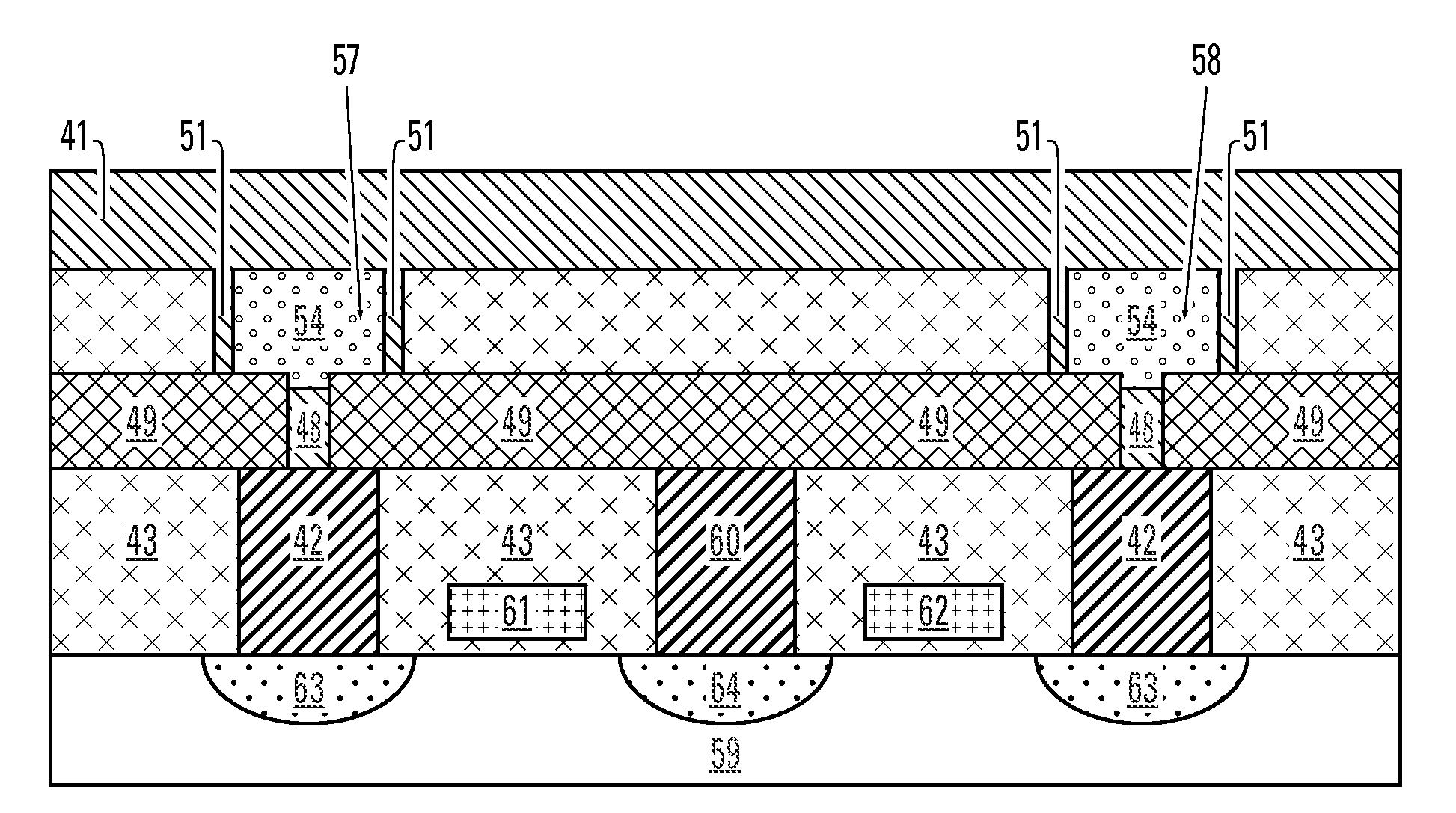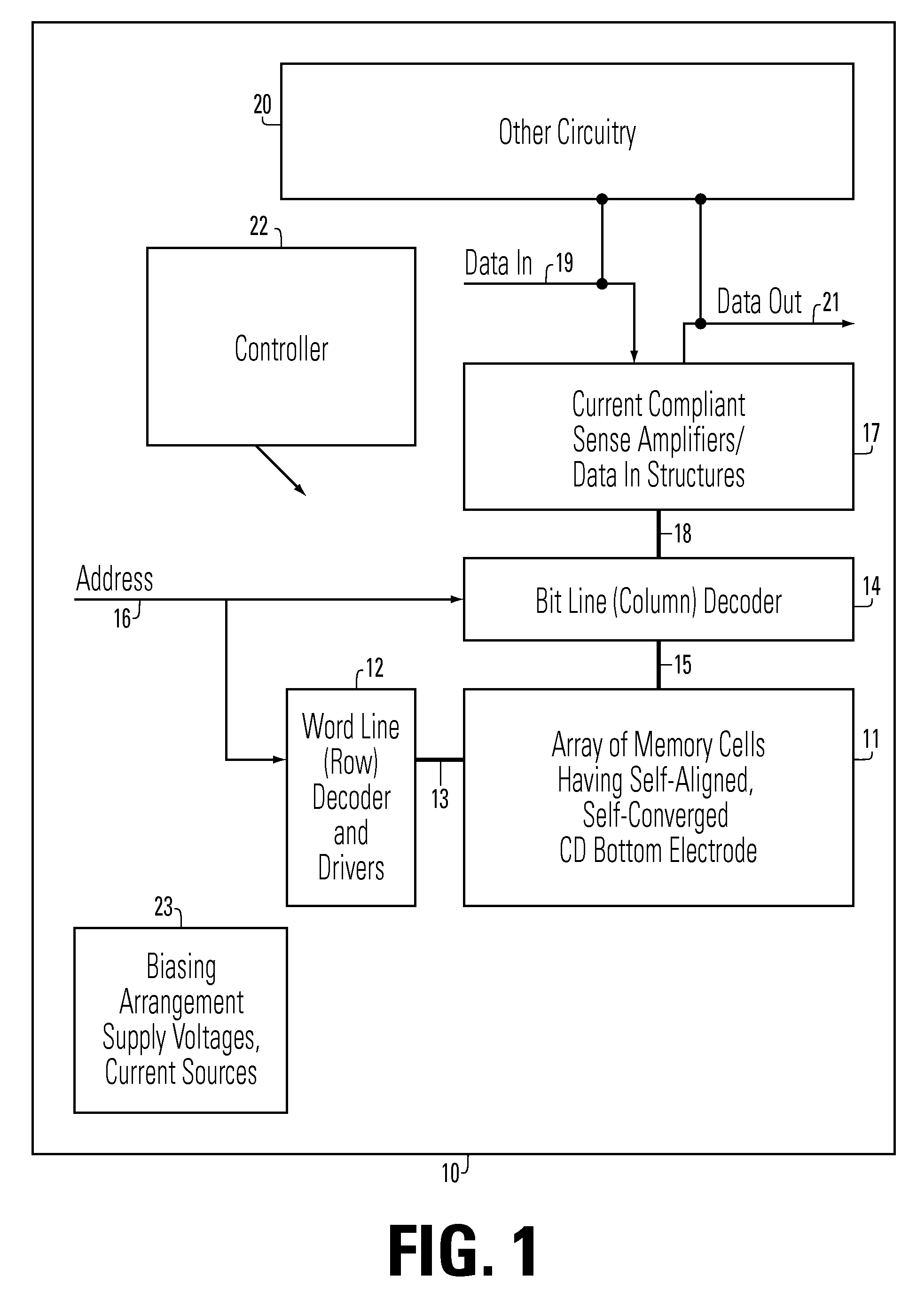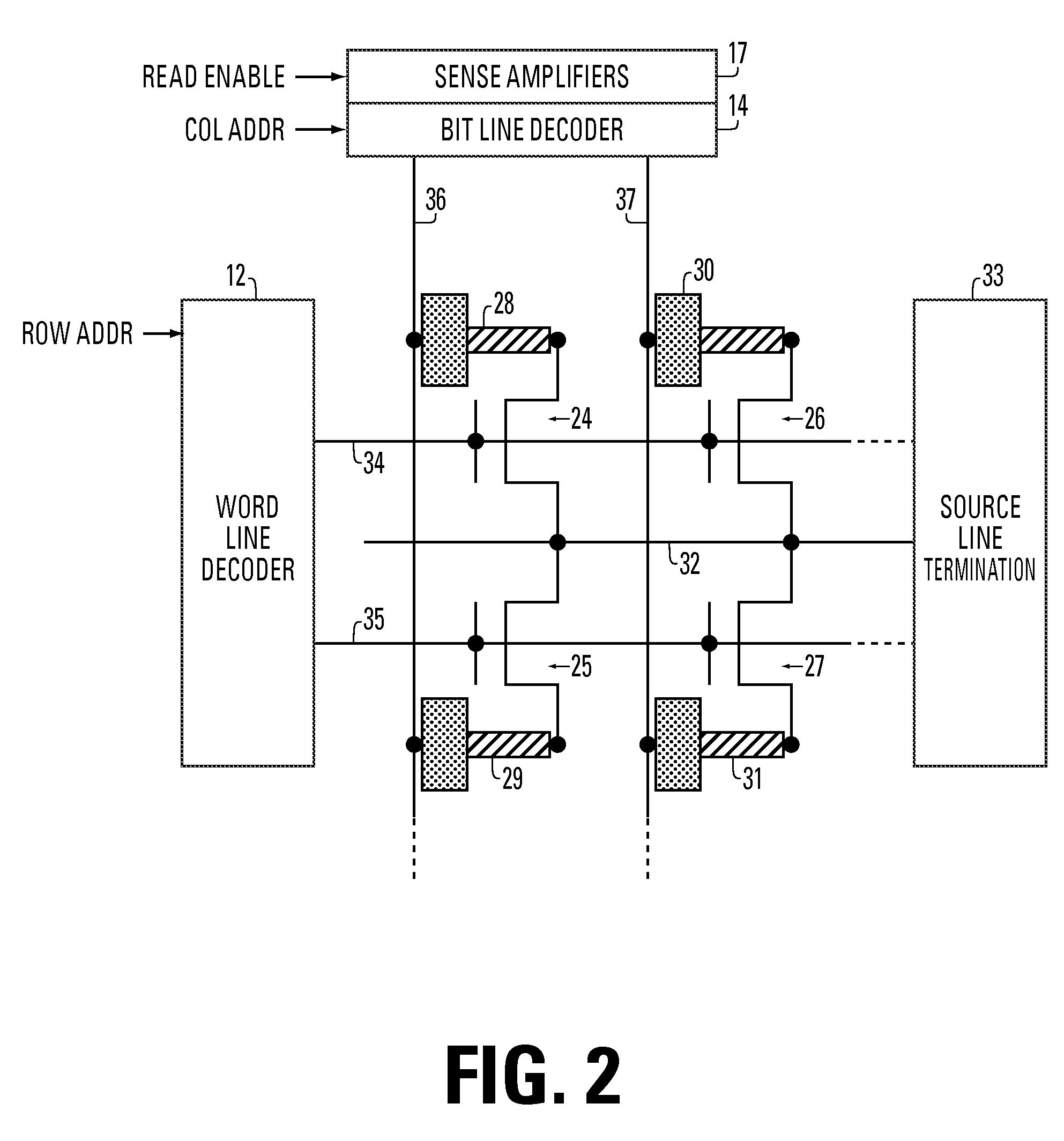Phase change memory cell in via array with self-aligned, self-converged bottom electrode and method for manufacturing
a memory cell and array technology, applied in the direction of bulk negative resistance effect devices, semiconductor devices, electrical equipment, etc., can solve the problems of reliability and yield issues, difficult to form reliable contact with the underlying access circuitry at the bottom of very small vias, and cells in the array being permanently disconnected from the access circui
- Summary
- Abstract
- Description
- Claims
- Application Information
AI Technical Summary
Benefits of technology
Problems solved by technology
Method used
Image
Examples
Embodiment Construction
[0034]Embodiments of the present invention are described with reference to FIGS. 1-22.
[0035]FIG. 1 is a simplified block diagram of an integrated circuit 10 including a memory array 11 implemented using phase change memory cells as described herein having self-aligned bottom electrodes with self-converged critical dimensions. A word line (or row) decoder 12 is coupled to, and in electrical communication with, a plurality of word lines 13, and arranged along rows in the memory array 11. A bit line (column) decoder 14 is coupled to and in electrical communication with a plurality of bit lines 15 arranged along columns in the memory array 11 for reading data from, and writing data to, the phase change memory cells in the memory array 11. Addresses are supplied on bus 16 to the word line decoder 12 and the bit line decoder 14. Sense amplifiers and data-in structures in block 17, including current sources for the read, set and reset modes, are coupled to the bit line decoder 14 via data ...
PUM
 Login to View More
Login to View More Abstract
Description
Claims
Application Information
 Login to View More
Login to View More - R&D
- Intellectual Property
- Life Sciences
- Materials
- Tech Scout
- Unparalleled Data Quality
- Higher Quality Content
- 60% Fewer Hallucinations
Browse by: Latest US Patents, China's latest patents, Technical Efficacy Thesaurus, Application Domain, Technology Topic, Popular Technical Reports.
© 2025 PatSnap. All rights reserved.Legal|Privacy policy|Modern Slavery Act Transparency Statement|Sitemap|About US| Contact US: help@patsnap.com



